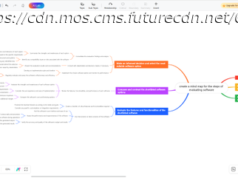Sometimes it’s all about culture not capital
Paid Feature We expect software development teams to move fast and at scale these days. But can you be sure your data center and network ops teams are able to keep up? Raw network speed and data center capacity is just part of the equation, Jon Lundstrom, director of business development for Nokia’s webscale organization, says. Networks need to be able to support cloud native architectures for cloud native applications which «live not in one place, they live as containers and they are potentially short lived.» At the same time, DevOps teams have a ton of automation at their disposal. «They want to consume the network, whether that’s private cloud or public cloud, in the same way.» They want the network to be a black box, out of which they can pull high or low level information covering security or connectivity, via an API, and «then have the network just happen.» Delivering this represents a cultural and technical challenge for the NetOps team running the network given their focus has traditionally been on stability and minimizing risk, says Lundstrom «They can absorb technology at a certain pace. But it’s been challenging for them to keep up with the DevOps side of the equation.» The problem is that traditional network planning practices don’t match this new world, according to Lundstrom. Typically, modeling was revenue driven, with data center operators focusing on the «new revenue» that was, theoretically, on the table. Planners would make assumptions based around new services they could offer, calculate the capex costs needed to deliver them, and work out the payback period. However, this approach glosses over the internal operating costs of running the network over the long term and is increasingly out of kilter with both the new drivers and the possibilities presented by modern architectures in terms of optimization and automation. In reality, capex is «the smaller portion of the bigger business case, which is really the optimization or cost side of the equation. The cost side business cases are more complicated, because it actually takes an introspective view of where they are spending money today.» The adoption of newer technologies by Nokia customers has already delivered a fair degree of automation, Lundstrom explains. «But there are still a lot of areas we believe can be optimized. And again, it’s all to try to meet the needs of the DevOps team, who need to move faster and have more scale without sacrificing that reliability.» Nokia’s response has been to develop an online data center fabric Business Case Analysis tool that takes a much broader view of the network lifecycle, encompassing both the Day-0 design and Day-1 deployment stages, and the much lengthier, ongoing Day-2+ operating and management phase.
Домой
United States
USA — software Driving towards an automated network future? Make sure you've packed your business...






